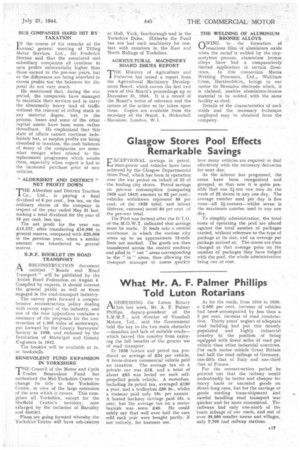What Mr. A. F. Palmer Phillips Told Luton Rotarians
Page 19

If you've noticed an error in this article please click here to report it so we can fix it.
ADDRESSING the Luton Rotary
• .Club last week, Mr. A. F. Palmer Phillips, deputy-president of the S.M.M.T., and director of Vauxhall Motors, Ltd., said the Government held the key to the two main obstacles —taxation and lack of suitable roads— which barred this country from enjoying the full benefits of the greater use of road transport.
In 1938 licence and petrol tax produced an average of £34 per vehicle. A horse-drawn commercial vehicle paid no taxation. The average tax on a private car was £18, and a total of about £63 was levied -on each selfpropelled goods vehicle. A motorbus, including its petrol tax, averaged £180 a year, and a trolleybus £80 6s., whilst a tramcar paid only 15s. per annum. A horsed hackney carriage paid 15s. a year, but "the average tax 'on a motor taxicab was some £40. He could safely say that well over half the cars sold' each year were bought partly, if
not entirely, for business use. , As for the roads, from 1910 to 1939. a 2,000 per cent, increase of vehicles had been. accompanied by less than a 2 per cent, increase of road construction. Thirty years' neglect of adequate road building had put this densely populated and highly industrial country in the position of being equipped with fewer miles of road per vehicle than other industrial countries. For each motor vehicle Great Britain had half the road mileage of Germany, one-fifth that of Italy and one-third that of France.
For the reconstruction period he pointed out that the railway would undoubtedly be better and cheaper for heavy loads or uncrated goods on • direct long runs, but for the carriage of goods needing trans-shipment and careful handling road transport was quicker and far more economical. The railways had only one-ninth of the route mileage of our roads, and out of over 39,000 smaller towns and villages, only 7,700 had railway stations.




















































